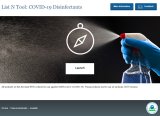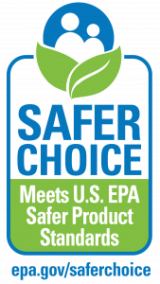Using Chemicals and Cleaning Supplies at School
School environments are healthier when they are kept clean and well maintained. Unsanitary conditions attract insects and vermin, and irritants and allergens found in dust and dirt can have a negative impact on student health and performance in schools.
Children can be more sensitive to chemicals and cleaning supplies then adults, so it’s important to use these products carefully, and never allow children to use or touch cleaning chemicals, including disinfectant wipes.
Toolkit for Safe Chemical Management in K-12 Schools
Audience: Facility managers, school administrators, custodians, and science and art teachers
EPA's web-based tool kit helps schools improve their chemical management practices.
Practicing Effective Cleaning and Maintenance
Audience: Facility managers, custodians, principals and school administrators
This component of the Model Program for the State School Environmental Health Guidelines shows Actions Schools Can Take to Practice Effective Cleaning and Maintenance.
Green Cleaning, Sanitizing, and Disinfecting

Audience: Teachers, facility managers, custodians, principals and school administrators, and school nurses
The toolkit presents practical information on how to keep early care and education (ECE) environments clean and safe using practices and products that are less hazardous and that protect young children and staff from infectious diseases.
Registered EPA Disinfectants for Use Against Infectious Diseases

Audience: Facility managers, custodians, and school administrators
Use EPA registered disinfectants according to label instructions. Disinfectants can be used on high touch surfaces when you know or suspect someone around is sick. Follow the Best Practices for Cleaning and Disinfecting.
Safer Choice

Audience: Teachers, facility managers, custodians, principals and school administrators, and school nurses
Safer Choice helps purchasers find products that perform and contain ingredients that are safer for human health and the environment.
Integrated Pest Management
By using integrated pest management instead of solely relying on extensive pesticide applications, schools can reduce pest populations and reduce the use of pesticides, making schools safer for children and school personnel.
Pests in Schools and Their Control
Pests such as insects, rodents, fungi, and weeds can affect the school environment and the children and people who work and learn there, causing both health and structural damage. Start learning how to control these pests.
